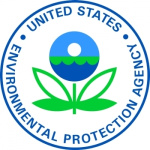- Industry: Government
- Number of terms: 11955
- Number of blossaries: 0
- Company Profile:
U.S. Environmental Protection Agency (EPA) is a federal agency responsible for the development and enforcement of regulations for human health and environment protection. The agency researches and sets standards for environmental programs and delegates. It was founded in 1970 following the proposal ...
The part of the Earth system comprising all ecosystems and living organisms, in the atmosphere, on land (terrestrial biosphere) or in the oceans (marine biosphere), including derived dead organic matter, such as litter, soil organic matter and oceanic detritus.
Industry:Natural environment
A powerful greenhouse gas with a global warming potential of 298 times that of carbon dioxide (CO2). Major sources of nitrous oxide include soil cultivation practices, especially the use of commercial and organic fertilizers, fossil fuel combustion, nitric acid production, and biomass burning.
Natural emissions of N2O are mainly from bacteria breaking down nitrogen in soils and the oceans. Nitrous oxide is mainly removed from the atmosphere through destruction in the stratosphere by ultraviolet radiation and associated chemical reactions, but it can also be consumed by certain types of bacteria in soils.
Industry:Natural environment
Small particles or liquid droplets in the atmosphere that can absorb or reflect sunlight depending on their composition.
Industry:Natural environment
One of the interrelated components of the Earth's system, the cryosphere is frozen water in the form of snow, permanently frozen ground (permafrost), floating ice, and glaciers. Fluctuations in the volume of the cryosphere cause changes in ocean sea level, which directly impact the atmosphere and biosphere.
Industry:Natural environment
Compounds containing only hydrogen, fluorine, and carbon atoms. They were introduced as alternatives to ozone depleting substances in serving many industrial, commercial, and personal needs. HFCs are emitted as by-products of industrial processes and are also used in manufacturing. They do not significantly deplete the stratospheric ozone layer, but they are powerful greenhouse gases with global warming potentials ranging from 140 (HFC-152a) to 11,700 (HFC-23).
Industry:Natural environment
Any gas that absorbs infrared radiation in the atmosphere. Greenhouse gases include, carbon dioxide, methane, nitrous oxide, ozone, chlorofluorocarbons, hydrochlorofluorocarbons, hydrofluorocarbons, perfluorocarbons, sulfur hexafluoride.
Industry:Natural environment
The release of a substance (usually a gas when referring to the subject of climate change) into the atmosphere.
Industry:Natural environment
The increase in volume (and decrease in density) that results from warming water. A warming of the ocean leads to an expansion of the ocean volume, which leads to an increase in sea level.
Industry:Natural environment
A measure of the influence of a particular factor (e.g. greenhouse gas (GHG), aerosol, or land use change) on the net change in the Earths energy balance.
Industry:Natural environment
The timing of natural events, such as flower blooms and animal migration, which is influenced by changes in climate. Phenology is the study of such important seasonal events. Phenological events are influenced by a combination of climate factors, including light, temperature, rainfall, and humidity.
Industry:Natural environment
